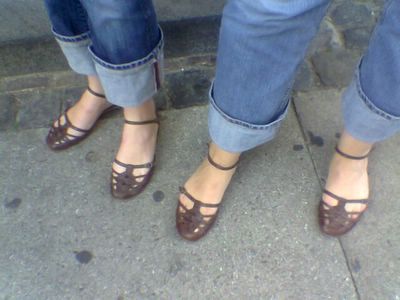
Editors Note:
Well, that's about it for The Copenhagen Report for the next few months until I'm back in Copenhagen - there is one or two other little posts that I may get to posting that I didn't have time for, and any other updates if news trickles through from my various friends in Copenhagen that I will post, but otherwise, check out my travelling blogsite - http://www.sunsandsnorkelling.blogspot.com as Elisabeth and I make our way to Shanghai via Singapore, Malaysia and Thailand. I will get a Shanghai blog up and running once I get there, so keep your eye on The Copenhagen Report for more info!
Tim.
Closing Time In Copenhagen (Part 4) - Always Look on the Bright Side of Life...
by Tim Anderson (timothyanderson2005@gmail.com)
Here's the latest installment of this soon finishing series, perhaps slightly more opinionated than the previous ones (Closing Time in Copenhagen - Part 1, Part 2, Part 3).
I could easily make Copenhagen out to be a little slice of northern utopia - there are loads of unique and fascinating things about the place. It is equally easy to go on the attack and complain. Easy, because by way of being the biggest city in Denmark, Copenhagen is conferred a number of unavoidable expectations, yet it is still a small city by the standard of large, international cities. This puts Copenhagen in a challenging position.
With a population over a million (counting the carefully fairly managed urban sprawl surrounding it) there is really no other realistic choice of a place to live in Denmark for those with a taste for urban living - though those living in Aarhus, Denmark's second largest city, may disagree. But Aarhus is less than half the size of Copenhagen, so it really is something different. For my taste, the consequence of all of this is having to accept that Copenhagen is a great city, though a little less dynamic place than I would wish it to be.
In any major city, change and reinvention over time is a natural occurrence, propelled forward by a large, constantly shifting population. Copenhagen can seem a little slow on the uptake to this end. One is tempted to blame the city’s residents for so passively accepting this state of affairs, which is really not fair to say, and wish there was a greater level of ethnic diversity to help things along. But Copenhagen is not a very big city at all, by European standards, and it doesn't have the same sort of recent colonial past of places like Holland, England and France that helps bring in the immigrants - so ethnic diversity is somewhat lacking relative to other spots in Europe for good reason.
In a place like Canada, for example, there are four cities of more than one million people (Calgary, Vancouver, Montreal and Toronto), and at least three of them could be said to have a set of characteristics that would make them ‘major global cities’ (sorry, Calgary…). This means that in Canada, unlike in a small country as Denmark is, one need not give up on urban life altogether if one is dissatisfied with how it is to live in one particular place (though one may have to move a fair distance).
Take the evident lack of diversity among restaurants and cafes in Copenhagen. Try to find a restaurant or café willing to be a little more experimental than to offer more interesting seating arrangements than a bunch of square/rectangle tables and hard wooden chairs, and one quickly runs short of options. There are a few, just not enough - in my opinion.
Live in large cities like London or Berlin, and a constant flow of new bars and cafes opening and closing every week means there is always a new place to try. Not so in Copenhagen. Worse, some of the best places in Copenhagen don’t even bother opening on Mondays and Tuesdays - the good ones that do often close around midnight. And a good number of the cafes also close on Sunday – the very day when there is the most time to actually go out and enjoy them! This doesn’t say much for the residents of Copenhagen’s persistence and determination to make the most of the 7-day week.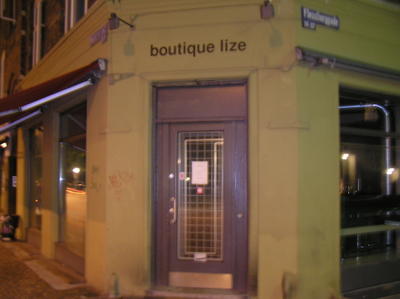
Tuesday night at Boutique Lize - waiting for the weekend.
The restaurant culture is also somewhat underdeveloped. Sushi restaurants have finally arrived, but eight years after taking firm hold in cities like London. There are a few Indian, Thai and Mexican restaurants - a few of the Thai ones are fantastic, my Indian friends claim the Indian ones could be better (though a couple are quite good), the Mexicans I know here refuse to acknowledge that the Mexican restaurants even serve Mexican food. I never did find an authentic Chinese restaurant. And so on. I can say there are at least a small handful of absolutely outstanding Italian pizza places (the rest are by-in-large poor Italian knock-offs run by Turks).
But don’t get me wrong – all of this is not to say that Copenhagen is a bad city, a boring city, or an inadequate city. In spite of it's limitations, Copenhagen has an astounding capacity to suprise. I can note two example from the past week alone.
The other night to kick off the Copenhagen's International Film Festival, Monty Python’s Life of Brian was shown in the open air square in front of city hall. Pretty cool. And every summer there is a small film festival where recent blockbusters are shown outdoors for free in various parks and open spaces around the city. These are moment when heading home late at night amongst a swarm of hundreds of bicycles, you really feel you are part of something special, a happy little community.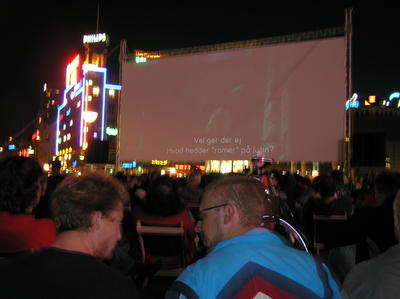
Always look on the bright side of life...
A night later I found myself sitting in the beautiful Ostedsparken in the centre of town, a large public park with a big sunken lake in its centre, surrounded by trees and grass slopes just perfect for sitting in the sun in the summer. Only this night, the feature was a free sound and laser show. The lasers were shone out over the water along with steam pumped from various miniature cannons around the lake, while a live dj provided cool ambiant electronic music broadcast silently around the park heard through headphones provided for free at the park entrance. No deposit, no identification, no nothing to borrow those - just simple, old-fashioned trust that each person would return them when they left. The show went on until after midnight.
Smoke on the water, lasers in the sky and music in the air...
Much of the action in Copenhagen takes place off of the streets, because Danes do know how to have fun behind closed doors. Danes love private parties.
The candles get lit year-round for cosy, quiet little dinner evenings that often stretch late into the night and involve the consumption of loads of beer and wine. Some are not so quiet. Wander around Copenhagen on a Friday or Saturday night and late into the night you are likely to hear music coming through the windows on at least a few apartment on almost any street. Neighbours are powerless to interfere - if one wants to have a party in their apartment, the only tradition is to put a small note in the stairwell a few days in advance warning the neighbours there will be some noise (and possibly inviting them if it is a large enough party). If the police are called, the only thing they will do is ask that the party be moved indoors (if it is outside), and that the windows be closed (if it is inside). Otherwise, the show can continue as long as desired. In truth the police are rarely, if ever, called anyway.
Denmark also happens to be one of the most liberal countries with regards to the sale of alcohol. It has never been a problem getting alcohol day or night - even if most of the best places close early during the week. On weekends especially, there is always an option available if one wishes to keep drinking through the night - even it the hour has reached 5, 6, or even 7 in the morning. Even on a Monday or Tuesday, somewhere in the city a bar is always open for business (though many of them one would not want to set foot inside), while kiosks sell beer and spirits from the early morning to late into the night.
Probably a more fruitful lens to view Copenhagen through is as a major city that has improbably managed to maintain a certain degree of small-town charm.
Examples are numerous. I have never found a major city where so many baby carriages, pregnant woman and kids are visible - a remark repeated by countless newcomers to the city. Copenhagen is an astonishingly family-friendly city, with it's ample parks and quiet streets.
It is impossible to get stuck in a Copenhagen traffic jam - because there are none!! In fact, there is hardly any traffic at all for a city of Copenhagen’s size. People cycle, take trains, the metro, but the car remains the transportation choice of last resort – an extremely flat terrain, good city planning that includes bicycle lanes lining virtually every street, expensive fuel and a tax on new cars that wildly inflates their price (basically doubling it in comparison to surrounding countries!) has ensured this.
It is somewhat reassuring to see countless shops closing for two or three weeks in the summer while their owner’s vacation - they really are the small, un-corporate operations that they seem.


Closed for summer vaction ('sommer ferie lukket').
If there is one universal complaint about life in a small town, it is the tiny space separating the present from the past (and the future). In any place with a relatively static population, mistakes and embarrassments are rarely forgotten entirely over time. This could also describe life in Copenhagen, almost, since as the only major city in Denmark, Copenhagen is the one place where most return to again and again. So the past is never very distant here.
In wandering around Copenhagen, one continually and unexpectedly stumbles across it - long-lost friends, former classmates, ex-colleagues, old teachers, former lovers, ex-boyfriends and girlfriends, and so forth. Talk for a while, and one often discovers countless unpredictable connections that link friends, family, and colleagues and so forth together. It happens continually. Knowing this demands an extra level of maturity from those living here – one must get used to living with any mistakes, poor choices and old disagreements from the past (and the distinct possibility that you may already know the person you ex-girlfriend or boyfriend is now dating). You really can’t run away without leaving the country – even retreating to the countryside is hardly any guarantee. Everyone seems to have ties to Copenhagen in one way or another.
It is indeed something special about life here, something that distinguishes Copenhagen from many other major cities where it is much easier for a person to become another anonymous face in the crowd, or disappear outright. But what kind of enthusiastic urban-dweller wants to do that anyway?
Closing Time In Copenhagen (Part 3) - To Feel Or Not To Feel
by Tim Anderson (timothyanderson2005@gmail.com)
I promised a more rambling style in these articles (Closing Time in Copenhagen - Part 1, Part 2) and what follows is certainly that…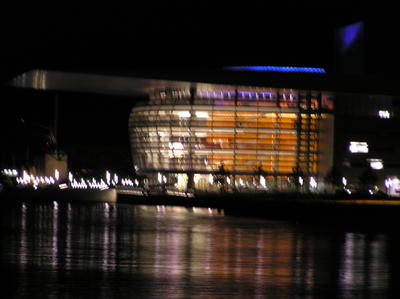
Is there any greater display of feelings than during
an opera at the (Maersk sponsored) opera house?
In an email the other day, a good friend of mine suggested that perhaps she was too much of a sap to allow herself to be too reflective (and hence overly sentimental) during times of change – such as moving cities. But I guess she gave herself away in saying this - obviously she feels something during such times.
On the other hand, my girlfriend's brother-in-law who produces films, began a project making deep-sea oil platforms safety videos for the Oil and Gas Division of Maersk (Denmark’s largest company) a few months ago. He recently relayed the story of one of the first meetings he had with Maersk, where he first introduced a few ideas for the contents of the safety videos. He suggested beginning the videos with a few short clips of Maersk employees (those that had spent time out at sea on Maersk's platforms) discussing how they felt about working an environment as atypical as an oil platform. The Maersk manager with whom he was meeting pointedly corrected a fatal flaw in the idea by noting (without humour) that, 'at Maersk, we do not feel'. (I realise it is difficult to imagine somebody actually saying this, but seriously, I'm not making this up!) So ‘feelings’ were left out of the safety videos.
Anyway, here we have the two solitudes – to feel or not to feel.
The summer here in Copenhagen has been cloudy and rainy and not all that warm most days for the past 3 weeks (and counting) – which has been a feature of each and every summer I have experienced here in Denmark in the past five years. It’s annoying. July was never meant to be a ‘trousers and jacket’ sort of month.
Perhaps this weather is contributing to my present feelings.
Still, capturing the essence of why something new is so enticing is hard enough in the moment. It’s even more challenging after five years when some of the initial fascination remains, though there is much that doesn’t hold the same captivating sway that it once did. Nonetheless, Copenhagen can be an exciting place to be. Allow me to digress a bit from the subject of life in Copenhagen, just for a bit more.
I recently read one of the weekly columns of Nigel Slater (the popular English food writer) in The Observer ("Catholic Tastes") (who I incidentally once worked for back when I lived in London - I cleaned his flat for several months) in which he tried to capture the essence of what was so special, so enthralling, about visiting a small but authentic Italian food shop. The most remarkable thing about the column was not simply his ability to transfer such feeling into lively description. Rather, I think it was the decision to focus on something so ordinary, then steadfastly refuse to acknowledge it as such.
He succeeded by allowing feeling, his feelings, to bubble to the surface in the process as he held this ordinary thing - a little Italian food shop - high in the air as if it were placed on a large pedestal, thereby better allowing everyone to behold what it really was. Suddenly, it seemed not so ordinary after all.
A nice reminder that we are surrounded by the remarkable. It passes by us, and us by it, constantly. However, it is only made remarkable when we recognise it as such. Otherwise it remains ordinary and wholly unremarkable. When we insist upon viewing things in such a mundane manner, it is unlikely we will register any notable reaction whenever they quietly pass by our eyes – or under our noses in the case of Nigel’s Italian food shop. And if that happens, it is a real shame. Not that it requires over-dramatisation either.
So this is a little preamble.
After a time here, it is easy to come to believe that Copenhagen is a rather mundane sort of place, in many respects (albeit one filled with a seemingly endless supply of beautiful women). New shops, restaurants and cafes open, close and change names at a surprisingly slow pace for a major city of this size, the streets all over the city are shamefully quiet on Sundays, and even the downtown core tends to become eerily quiet once the shops close each evening.
Coming from two plus years living in London, a place where the pace of life is frantic most of the time, I certainly know what it is to deeply love and despise a place all at once. I never felt more at home that I did while I was living there, and I haven’t since. Yet after two years and a bit of being there, I ran, ran, ran - knowing another couple of months could leave me foaming at the mouth. Anybody who has lived in London for a time knows what I’m talking about.
Copenhagen is not a place that is likely to draw such passionate, raw or contrasting emotions. And it could certainly not be described as a frantic place. I doubt it ever has. Perhaps it is better described as a part-time lover who you get excited about seeing, enjoy spending time with, yet know all the while that you could never marry.
Or maybe I’ve got it backwards.
Perhaps the part-time lover is really London, a place that in provoking such raw emotion may eventually eat you alive if you don’t walk away in good time. Perhaps the less frantic Copenhagen pace is bound to prove the more compelling one, if you're in for the long run.
So about Copenhagen…
Take Nyhavn, the beautiful canal in downtown Copenhagen, running just off of the main channel.
If you look at it in the wrong light, it just seems like a horribly tourist-cramped place, and for good reason. It is, but it is not only this. Both tourists and locals alike congregate there on sunny days, year round. It is a place that one is typically drawn to as a newcomer to the city quite simply because it is an enormously compelling spot. Colourful, gracefully aging, unsymetric buildings from centuries past line either side of the canal - buildings that could never be described using contemporary terms like ‘clean lines’ - while old wooden boats gently bob in its still waters. Focus on the wrong thing, and you’ll only notice the tourist boats shuffling hundreds of tourists in and out of the canals every hour.
The thing is, the canal is a marvellous place to be on a sunny day, or a sunny evening after work. It lies in such a way as to get the maximum benefit from the setting sun each day – one suspects this may have even been the plan, way back when. The Hong Kong Bar near the top of the strip is the sole remnant of the areas colourful past, when seaman came by day but mostly by night for what they couldn’t get while at sea.
It is difficult to replicate the feeling brought about sitting with a beer on the side of the canal on the wooden beams that line the canal on a hot, sunny day. The locals buy cold beers for cheap at a kiosk nearby or simply bring their own (Danes don't generally put much of a premium on drinking cold beer, so I have adapted myself to this habit out of necessity as best I can). Asian immigrants hover like friendly vultures, waiting to collect the empty bottles and cans for the 1 kr return deposit from them, occassionally offering a free service of opening an unopened beer or even scooping up a bit of garbage in the process. On a sunny day, I suspect they do quite well financially.

Tourists prefer to drink and eat at tables of the restaurants that lay opposite, in the sun when it is available, sheltered by umbrellas when it is not, and warmed by those mushroom heat lamps and wrapped in blankets provided by the cafes when it is cold.
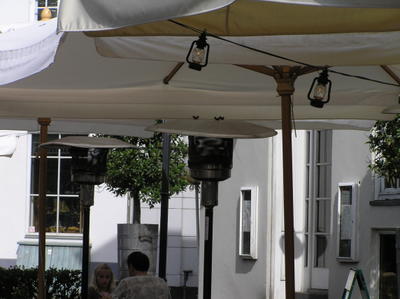
In fact, it's not only the tourists willing to brave the cold. Sitting outside wrapped in blankets is a very Scandinavian thing to do.
I remember one time many years ago, back when I was working at a café in London in Covent Garden, it was a particularly miserable cold and rainy day, far moreso than most days at that time of year. The head waiter nonetheless demanded that we set the outside tables. We could turn the heat lamps on and people might want to sit there, or so he insisted. He was a professional sort of guy, not prone to overt display of soft feelings at the workplace but he did at least have a sense of humour. When I asked him who he thought would like to sit out there he replied with dead-pan seriousness, "Oh, plenty of people - Danes, Swedes, Finns…". I laughed. (When the wine glasses began blowing off the tables that blustery day, he at last relented).
Apropos, this comment of his was not far off from the truth. Cafes in Copenhagen have long adapted to the Danish desire for fresh air, even if it is bone-chillingly fresh, by offering all the blankets to customers that one needs to stay moderately warm. And people, terraces full of people, do use them.
When the weather is as it is here, however you might feel about it, you just have to adapt.
Yes, up next, Part 4...
Closing Time In Copenhagen (Part 2) - The Housing Situation
by Tim Anderson (timothyanderson2005@gmail.com)
This is the second installment of a series of articles about life in Copenhagen, knowing that August is my last month living here for some time. The first one is Closing Time In Copenhagen (Part 1).
I look out the window of my apartment, down to the quiet cobblestone street below, feeling that where I am is a place distinctly Europe – old Europe, stereotypical Europe. In fact, where I live is not that old by such standards – the apartments around here are generally in the area of 100 years old, though there are certainly some that are much older. In certain respects, the ones on my street in Christianshavn even seem quite modern.
A friend of mine living right in the dead centre of town, no more than a 15 to 20 minute walk from my place (see how far that will take you in London) lives in a building nearly 200 years old that is built on 500 year old foundations. It looks it. Every now and then he asks me what I think the chances are that a building like that could suddenly become unstable – essentially crumble without much warning to a state beyond repair. He loves the place, but nonetheless has some genuine concern for the security of his investment - since he bought the apartment. I personally don’t think it is too likely to happen, but then again it’s not my bank loan on the line, so I'm probably not seeing it as he is. Why should I be worried?
There has been for sale signs in the windows of two apartments just across the street from ours for some time now – several months. Looking out at them just now, I see a sold sign has been pasted over one of them, though the other still remains. It’s about time. It has surprised me how long these two have been listed for sale since the housing market around here (all over Copenhagen) has been moving at more than a brisk pace. Rather, prices have been exploding over the past two years, and at a far greater rate than the official statistics suggest.
Various friends of mine, ones that had the good sense to buy an apartment at some point over the last years, have made more money during this time by selling their apartments or re-mortgaging them to take advantage of their increase in market value (and lower interest rates) then they have in salary. This is something endlessly frustrating for those not quite in a position to buy during this time (myself) or who (foolishly?) opted to rent and are now left pondering why they made this choice.
In fact, the housing market has been behaving in this manner for several years now, and shows few signs of stopping. The number of apartments available for sale in Copenhagen is at an all time low, as are interest rates (which at least makes loans more affordable than ever at the moment) which has consequently been driving prices up, up, up. Trying to find a decent place in central Copenhagen (that matches ones reasonable desires) on a first-or-second job after graduation type of salary is proving increasingly challenging.
Still, I know that this price appreciation simply cannot be sustained for that much longer – which does not at all mean that prices will suddenly drop. Of course they could – a few signs of greed are starting to show, always an ominous sign.
Just the other day, a story came out about a real estate agent who had been selling numerous contracts over the last months for reservations on apartments (over 100) in a new building development being finished shortly. She also happened to be one of the investors in the development. Because prices have shot up so dramatically since the reservations were first taken, the development board (of which she is a member) opted to (legally) cancel every one of them. In this way they could re-price the apartment units at a higher level – more money.
Such behaviour clearly strains the bonds of trust between client and customers, no question. On this scale where so many people are affected, it also suggests a brazen confidence, if not a possibly deluded overconfidence, in a market capable of producing an endless stream of customers willing to overlook such questionable tactics and accept whatever terms are on offer just for the chance to buy. Similar behaviour has lead to the demise of many a business in the past, even ones seemingly infallible, and it tends to reach it’s zenith just before an economic collapse of one sort or the other. Let’s see what happens.
The housing situation in Copenhagen is complex, to say the least, and not one that is easy for a foreigner to get a handle on.
On the more understandable side of things are the literally countless tens of thousands of generic two room apartments everywhere in the city. Somehow over the years, the layout of these apartments has come to be a sort of defacto-standard for what could be termed, ‘the two-room Copenhagen apartment’.
When one sees an advertisement with the words, ‘two room apartment’ accompanied by a measurement of around 50 to 60 sq metres, one can make a pretty solid guess at what the apartment looks like - a fair sized room at the front, a second smaller room for a bedroom looking out into the back garden, and beside this a small kitchen and tiny bathroom (with a shower practically hanging over the toilet and certainly no bathtub!).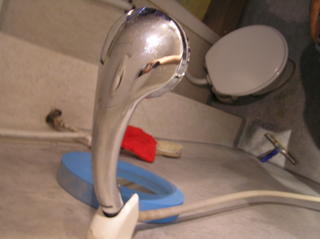
All that remains is to ascertain the apartments precise location, how big are the windows are/how bright the apartment is, and if it needs painting.
Most apartments have accesss to a large shared garden out back for the up to 200 or more apartments overlooking it. This garden may be more or less sunny and usable, depending upon it's state of repair, and the amount of space between the buildings.
In the case of our most recent apartment, the back garden was just beautifully refurbished thanks to a government fund which is earmarked for such projects that footed the entire bill. Again, the wonders of living in a socialist country. At one end the buildings were quite close together, while at the other (our end) there was quite some space - which meant it was not as easy to watch what the neighbours were up to, something I always enjoy doing.
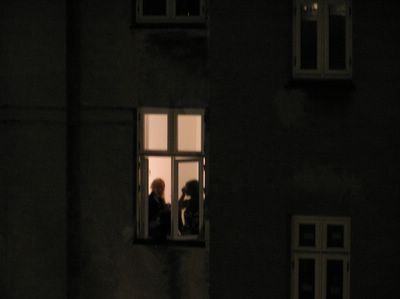
The monthly student (non-repayable) grants paid by the Danish government to all students in Denmark for up to six years of studies are perfect for renting one of these (or buying them as an andels apartment, which I will talk about shortly) with a friend, girlfriend or boyfriend – which is a very attractive proposition for a couple in love. Oftentimes, this is exactly what happens.
Moving into such a two-bedroom place is hardly a lifetime commitment, since they are certainly not big enough for very long once kids enter into the picture. Equally, it makes the process of splitting up and moving on, if it should ever come to that (and as statistics go, the odds are that it will) just as easy – they are highly sellable (or rentable). So there is a steady turnover of these places.
On the other side of things, is the peculiar form of ownership known in Danish as ‘andels’ apartments. There really isn’t an English equivalent (or translation) for this, so I will describe what they are instead. There are literally tens of thousands of these apartments all over Copenhagen (and the rest of Denmark).
These could loosely be described as collectively owned apartment blocks, each managed by an organisation that control the purchase and sales of the rights to live in the apartments within their block(s), and that decides the amount of the monthly rental-type fee that will be paid as well.
The thing is, the prices of the shares (ie. right to live) that one of these andels apartments gets bought and sold for by no means corresponds with their market value if they were being bought and sold on the private market. It is the board of each andels, consisting of residents living there, that dictate the prices for each. So the prices do move over time, just much more slowly than the market. As a rule, they are ludicrously cheaper to live in (by Copenhagen standards) often costing half as much as the monthly outlay for an equivalent privately owned apartment. If you’re lucky enough to get your hands on one. This is the other issue.
Without connections (typically close family, friends or work colleagues) or good foresight from your parents (more on this shortly), the waiting lists for these places range from 3 to 15 years. It’s a bit like playing a lottery that comes with a guarantee that you will win big eventually, at some indefinite point in your life, if you are willing (and able) to wait.
In many instances Danish parents put the children on an ‘inactive’ waiting list for one or more andels organisations when they are small, which means that when they are 18 and ready to move away from home, they will have the right to be put on the ‘active’ waiting list, which will typically be anywhere from 2 to 5 years long in itself. Eventually, they will begin to be offered the chance to purchase the rights to live in various andels apartments. One can only hope their parents have thought of doing this.
If all of this seems like it would be extremely bizarre for an outsider coming to live in the country to understand, it absolutely is.
The problem with this system as it stands is that it greatly distorts an already overheating housing market (pushing privately owned apartment prices up higher than they should be), while only offering benefits that can at best be described as unevenly dispersed. Because a board decides the purchase and sales prices of andels apartments, there is no free market operating here. And there are so many, many, many of them in Copenhagen, so it is an issue.
Rather, it could be suggested that this is an example of radical socialism at it’s most random. Regardless, it is a system that is unique, distinctly Danish, and has a significant influence on life in Copenhagen. No question about it. I don't expect that the housing market is something that I will miss very much when I leave.
But housing is hardly the only thing worth discussing, so read on. Coming shortly, Part 3.
Closing Time In Copenhagen (Part 1)
by Tim Anderson (timothyanderson2005@gmail.com)
August is my last month living in Copenhagen, after five extremely interesting and certainly not predictable years here. With that in mind, and inspired by various other blogs which I enjoy reading, (particularly City of Sound,a fascinating blog inspired by life in London) I'm going to change the tone a bit in my last few blog entries to a more rambling one. I want to try to capture a bit of what exactly Copenhagen is all about - that which is notable and oftentimes unique about the place.
Hopefully in using what is for me a more experimental approach and writing style, I will manage to reveal something that I previously was not able to and better paint the scenes I wish to portray. Since it is a type of writing I most enjoy reading myself, I may as well try. It is also a way of drawing a bit of a line which separates the various issues I have touched upon up to now, from the things I want to say in these last entries. I do hope I manage to succeed.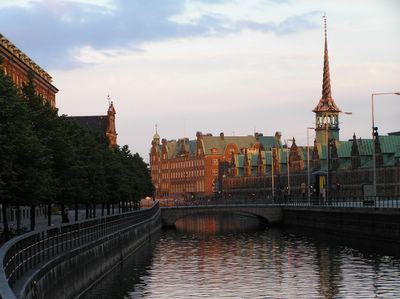
My time in Copenhagen, my introduction to Denmark and all that is valued here is soon coming to a close. This departure may be definitive – once and for all - it may not. I plan to be back in a year, but all the same it is by no means certain that I will return. If I should return, or when I do, I will no longer be viewing this place through the same eyes – rather I will be comparing what I am seeing to the images of a Denmark I remember, but that may never have been. The comparison is bound to be somewhat romanticised.
The introduction I have had to this place has been rather thorough, I would judge. It has been just short of five years since I arrived here, and it will be five years and two days from this arrival when I leave. I never expected to be here this long, but it's not like any other existing plans of mine were disrupted by staying. Five years seems a good round number and therefore a good one to part on, in my mind.
To begin to understand what it is to be part of daily life in Denmark, one must first realise just how exclusive a little club the Nordic countries are. These are amongst the richest in the world, taken on a per capita basis (and also the coldest and cloudiest). They are countries that have taught themselves how to succeed (speaking now of countries as if they were people). This is not some poor karaoke attempt of larger economies such as the U.S., the U.K. or Germany. The Nordic countries have created a model that is all their own - it is not an adopted one.
Many foreigners coming to Denmark to live for a time quickly become somewhat critical, at least of how daily life is structured, and how willingly people (Danes) accept this way of being. It seems so organised, so coldly efficient, and though the people are generally well-behaved, the streets seem empty and a things generally bit dull as a result. However, such a view is far to simplistic to represent the reality of the place. There is a rich past that has lead to this way of being, this unequivocally modern system. The state of things as they now exist is hardly an involuntary occurrence.
Denmark is a small, fairly uniform (and quite northern) country in comparison to many other western countries after all. If one expects a more extreme sort of diversity and less uniformity, one should not choose to live in a place with the characteristics of Denmark. France, England, Canada or the U.S. spring to mind as better choices.
Southern Europeans, for example, don't only complain about the weather being a little to cold (as most foreigners living in Denmark do). At a much deeper level they tend to feel frozen out of the Danish way of being, after a short while here. Danes are friendly, and genuine in their friendly gestures, but they have little interest in humouring or for that matter sympathising much at all with those coming to live here who refuse to adopt to their way of being - which is not to say they are not willing to meet somewhere closer to the middle. This is not a critisism, as Danes hardly the only nationality who are this way, and there are good reasons for their actions.
On the other hand when Danes travel, particularly for extended periods of time (which they do in huge numbers), it is often as if some alter ego seizes their personality and takes it over while they are out of the country. Consequently, many an unsuspecting foreigner has been lured back to Denmark by a beautiful (dyed-) blonde mane, a set of luscious curves, and an irrepressibly free-spirited personality - all of which can be overwhelmingly enchanting being so at odds with what they encounter typically in their daily lives, wherever they are from.
The thing is, Danes can afford to be carefree and a bit reckless when they wish to be. This is one of the luxuries that the system they have created for themselves permits, which is incidently something that is rather unique. Few countries offer a level of support to their citizens comparable to that which is offered in Denmark. Danes are generally aware of this, and they are also aware that they pay for dearly for this privledge with one of the highest tax rates in the world (68% at the highest level!).
So, many a foreigner that has fallen in love with one of these travelling Danes, once pulled back to Copenhagen, is suddenly shocked to discover how Danes behave at home . It can come as a surprise to many that the same factors that permit such freeness also enable one to more comfortably apply oneself in countless less carefree directions as well - education, jobs, kids, family and so on - knowing that change is not only possible (because one will never wind up with no income), but will be widely accepted to boot. This way of being is something that can be said to be distinctly Danish, or perhaps more appropriately, distinctly Scandinavian (but I've only lived in Denmark). Perhaps this is one of the reasons the divorce rate is so high in Denmark (50% and climbing), a figure which does not include the countless couples who live together for a time, and then split up. Of course there are countless relationships that succeed!
Even more shocking for foreigners, can be to experience just how abruptly and definitively Danes can move one when they decide to. (For the record, I came to Denmark alone and for the purpose of studying, which I did for the first three years I was here, so I speak from the position of observer in saying all of this, not from some bitter personal experience.)
In Denmark, there is no stigma whatsoever with moving in with a boyfriend or girlfriend, then moving out after a time, and then moving in with another, and so on. Even though most western countries are moving in this direction, Danes were already there 20 or 30 years ago. Oftentimes, a foreigner in Denmark who has suddenly been cast aside once the relationship hits a rough patch, have little from their own cultural background they use to relate to and understand just what has happened and how it can be like this. Not that anyone expects (much less plans!) from the outset that a given relationship they are in will eventually end.
There are not many places where people allow themselves this level of uninhibited personal freedom. Of course, there are other ways that Danes appear to inhibit themselves, it's just that sex and relationships are not among them, to generalise of course.
But life in Copenhagen is like that, because getting on with things is a pretty simple process, all things considered. One only has to take their salary (which is always an amount one can live comfortably on), or their SU money (provided by the Danish government to all students for up to six years of studies), or their unemployment money (which is generally just below the typical salary of whatever their previous job was), along with any supplemental money offered by the government if they have children, and get on with life.
I’m not at all suggesting that Danes are cold or calculating in any of this. Just that Danes rarely find themselves in such dire straights - whether from relationship troubles, trouble finding a decent job or even an unexpected pregnancy and various other unanticipated situations - as to feel the need threaten to throw themselves from the nearest bridge (much less actually do it) when things get a little rocky and uncertain from time to time. The result is a relative calmness and stability, not only behind closed doors, but also in the office and on the streets. It is just not always apparent, at first glance, why things are like this.
So this is my introduction, there is much more I have to say on many divergent areas of life in Denmark. Next up, Part Two.
Bombs explode in London, Copenhagen gets the jitters...
My apologies in advance for this one, I am trying too avoid bothering with too many purely political issues on this blog, as I think there are a lot more meaningful and productive ways to spend ones time and (mental) energy. But sometimes certain things just need to be said for the sake of one's own sanity!
As soon as the news came out that several explosions had rocked London, one could sense a palpable level rising tension in Copenhagen. For example, the day after the London attacks, a reported bomb threat (which proved to be false) shut down the Copenhagen metro as the bomb squad moved in to remove a suspicious looking package. Thankfully, there was no bomb. Since then, the police have been a frequent presense all over the metro, highly visible above and below ground at the various stations. 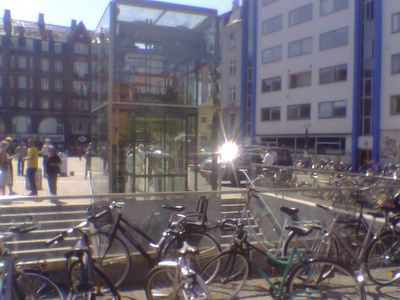
(Okay, this is not a great picture, but that is a police van to the right of the Christianshavn metro entrance in Copenhagen, with two police officers standing by).
It's not really surprising a lot of Danish voters are finding themselves a little anxious. After all, Denmark is a part of the Bush's coalition of the willing, and what's more, enough Danes recently thought it was a good idea to re-elect Anders Fogh Rasmussen, the guy who made the decision to put Danish troops there in the first place.
Although Rasmussen is a guy who steadfastly refuses to offer any constructive critisism of certain American military activities in the middle-east region or regarding American military conduct during the open-ended and undefinable 'war on terror' such as Guantanamo Bay, he is not a guy afraid to participate in a good, pandering suck-up or related photo op when the opportunity strikes.
Where's Waldo...I mean Anders? Oh, there he is!
Unfortunately, with bombs exploding in London, many Danes are increasingly wondering if Copenhagen might not become a terrorist target, sooner or later, given the Danish presense in Iraq.
Actually, why is Denmark in Iraq anyway? Though the decision to support the Iraqi war was one seemingly incoherent with values of socialist Denmark, some have quietly whispered about how it did coincide with the interests of Denmark's biggest company, Mærsk, a company that has profited greatly from the war - much more so than any other Danish company (see my previous article Courting controversy, Danish army style). Unfortunately, the mainstream Danish media doesn't really like to discuss this issue, and many Danes are in flat out denial that there might be such a connection.
Fortunately, it is not really necessary to rely on the mainstream media to figure out the links. See, Mærsk is not only a pretty big company, they also tend to make their activities fairly obvious. For example, when they do business somewhere, they often use little ships like these:
If one wonders whether Mærsk is making profits in Iraq, a quick internet turns up various press releases and so forth regarding Mærsk contracts in Iraq (many signed before the decision to send Danish troops to Iraq was made). In summary: it is very easy to see where the company is operating (look for the ships), and why there are there (look for the press releases). Thus, even when the Danish mainstream media prefers to avoid connecting the various issues together, it is very easy to figure out these things anyway.
So let me spell it out: Maersk is worth a lot of money to Denmark, in terms of taxes, employment and in terms of the an overall influence on society and politics. This is a huge elephant of a company in a very small petting zoo of a country. Too many uncomfortable questions were bound to be asked of Maersk doing business with the U.S. army and in Iraq if the Danish government didn't throw it's support behind the Americans.
Now, a little suggestion for those who think the bombing in London was bad (and it most certainly was), and who also may be thinking about how devasting inexplicable bombings in general can be: what about those innocent civilians residing in Baghdad, who were subject to night after night of bomb attacks and destruction during the war along with countless civilian casualities ('collerateral damage') as a result (not to mention roving military patrols ever since)? It makes a one-time incident such as that in London - as horrendous, physically destructive and psychologically tormententing as it has surely been - pale in comparison.
Hmmm, what to do, what to do?
Well, imagine you are a Danish voter. Are the decisions made by the current government the best ones?
There are many ways to fight terror, unfortunately, dropping (more) bombs in hopes of eliminating it tends to rather increase it instead, since it makes a lot of those who are already angry even angrier, and worse, it tends to make a lot of (innocent) people who were not angry at all before suddenly very angry as well, since now their lives are also being affected.
So what is there a better way to react to these London terror attacks, and the perpetual threat of more to come elsewhere?
Personally, I found perhaps the most thoughtful and reasoned reaction in a column published in the UK newspaper, The Guardian, written by (Ed. note: now deceased) Robin Cook (who you may recall resigned from Tony Blair's cabinet in the lead-up to the Iraq war, owing to his disagreement with Blair's Iraq strategy of unconditional support for Bush's war). Cook has since become a loud critic of Blair's approach as a labour backbencher.
To link to the article: The struggle against terrorism cannot be won by military means
I have taken the liberty of reprinting it, in part, below:
"The struggle against terrorism cannot be won by military means. The G8 must seize the opportunity to address the wider issues at the root of such atrocities.
The danger now is that the west's current response to the terrorist threat compounds that original error. So long as the struggle against terrorism is conceived as a war that can be won by military means, it is doomed to fail. The more the west emphasises confrontation, the more it silences moderate voices in the Muslim world who want to speak up for cooperation. Success will only come from isolating the terrorists and denying them support, funds and recruits, which means focusing more on our common ground with the Muslim world than on what divides us.
The G8 summit is not the best-designed forum in which to launch such a dialogue with Muslim countries, as none of them is included in the core membership. Nor do any of them make up the outer circle of select emerging economies, such as China, Brazil and India, which are also invited to Gleneagles. We are not going to address the sense of marginalisation among Muslim countries if we do not make more of an effort to be inclusive of them in the architecture of global governance.
But the G8 does have the opportunity in its communique today to give a forceful response to the latest terrorist attack. That should include a statement of their joint resolve to hunt down those who bear responsibility for yesterday's crimes. But it must seize the opportunity to address the wider issues at the root of terrorism.
In particular, it would be perverse if the focus of the G8 on making poverty history was now obscured by yesterday's bombings. The breeding grounds of terrorism are to be found in the poverty of back streets, where fundamentalism offers a false, easy sense of pride and identity to young men who feel denied of any hope or any economic opportunity for themselves. A war on world poverty may well do more for the security of the west than a war on terror.
And in the privacy of their extensive suites, yesterday's atrocities should prompt heart-searching among some of those present. President Bush is given to justifying the invasion of Iraq on the grounds that by fighting terrorism abroad, it protects the west from having to fight terrorists at home. Whatever else can be said in defence of the war in Iraq today, it cannot be claimed that it has protected us from terrorism on our soil."
Square boxes, then and now...
by Tim Anderson (timothyanderson2005@gmail.com)
As irrelevant an issue as it may seem, I simply can’t resist offering my opinion regarding a classic discussion, the SAS Hotel in central Copenhagen designed by the legendary (and deceased) designer/architect Arne Jacobsen, source of much debate in Copenhagen over the years.
In Denmark, Arne Jacobsen is about as mainstream cult as one can possibly be. Even if his penchant for wearing bow ties created an aura of stiffness surrounding the man himself during his lifetime, most of his building and furniture designs pushed the boundaries of the time. There is no question that his influence lives on today in Denmark, particularly in Copenhagen - perhaps to a much greater extent than it should, some have suggested (after all, the man did most of his great work back in the 50’s and 60’s!).
 Jacobsen never feared being provocative; just consider the classic SAS Hotel in downtown Copenhagen that was entirely designed by the great man – the building itself and all of the interior furnishings. Though only one room (room 606, pictured) exists today with the original furnishings as selected and designed by Jacobsen intact, the image Jacobsen aspired to create lives on.
Jacobsen never feared being provocative; just consider the classic SAS Hotel in downtown Copenhagen that was entirely designed by the great man – the building itself and all of the interior furnishings. Though only one room (room 606, pictured) exists today with the original furnishings as selected and designed by Jacobsen intact, the image Jacobsen aspired to create lives on.
Debate about its exterior has never really ended, with opinion consistently split between those regarding it as brilliant (and very much ahead of it's time), and those less impressed who generally regard it as being dull (or worse). As history teeters towards myth (certainly the case in Denmark regarding anything involving Arne Jacobsen) and reality consequently becomes clouded, debate becomes more challenging.
However the SAS Hotel may have once seemed, and whatever the dissenting voices even today may whisper or shout, a quick glance at this industrial looking, army-green coloured box tells all you need to know – it is pretty ugly!
About the only thing remarkable about it's exterior at this point is the fact that it was designed by Jacobsen. Unfortunately this knowledge does nothing to improve the building's present-day appearance, though it may change one's perception of it, somewhat.
Discussion regarding this 60's building does matter, if only because so little has changed since that time. Though the building is unlikely to disappear anytime soon, new highrises continue to be built in Copenhagen, some with quite striking architecture, others less so.
Copenhagen, in spite of being the capital of Denmark and a fairly internationally oriented city, is not a place where the highrise building has ever really been embraced (ie. buildings higher than 10 stories). It's towering older brother, the skyscraper, even less so (ie. New York, Chicago or Toronto style).
In touring around Copenhagen (I would suggest a bicycle for the job) most buildings are no more than five to seven stories high, and very few more than ten stories - though there are a number around. Of those that exist, one may not be inclined to go as far as calling them ugly, however many would agree they are certainly not 'beautiful' in any most senses of the word. Perhaps uninspired would be a better term.
The very recently completed headquarters of Codan, a Danish insurance company.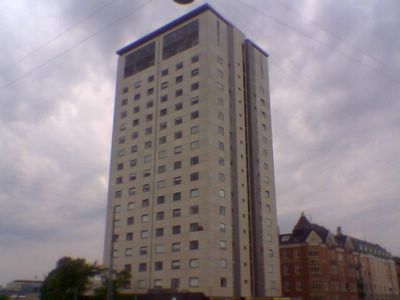
In took a while to figure out what to do with this one, though it has recently been converted into a youth hostel.
Suffering from a little too much Arne Jacobsen influence?
On the other hand, recent residential highrise buildings such as some old warehouse conversions at Islands Brygge, overlooking the channel, (pictured below) show a degree of flair, creativity and inspiration clearly absent in most of the existing commercial highrises. In any event, the debate will continue, and hopefully more inspired building such as these will continue to appear.

Morning delivery of draft beer in Copenhagen
Many mornings in Copenhagen, on my way to work, I cycle by a truck that always makes me laugh. It closely resembles the oil truck that used to come a couple times a year to the house I grew up in as a kid to fill up the oil tank in our basement (that fueled the furnace in the house). Except this truck here in Copenhagen carries no oil. In fact, it is a Carlsberg beer tanker!
For those without a working command of Danish, 'Fadøl' (as written on the side of the truck pictured below) means 'draft beer'.
And just as it was done with those old oil trucks (that are still around), a hose is pulled from the truck and is connected to the beer tanks located in the basement of the bar...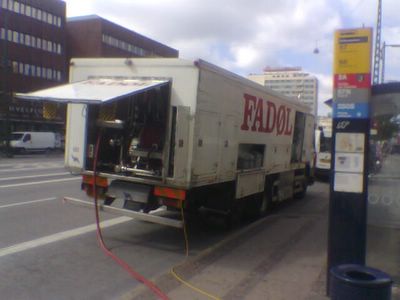
...via a little hole in the ground, in front of the bar. Just pull the hose!
...and voila, tasty beer will be flowing from the taps in no time! Needless to say, this is not exactly the quality kind that I have been writing about in previous posts...
Setting the story straight - The Remarkable Danish Beer Market (Part 3)
by Tim Anderson (timothyanderson2005@gmail.com)
I want to set the record straight. After writing a couple of articles about the Danish beer market which I published earlier (The Remarkable Danish Beer Market (Part 1) and Carlsberg Stikes Back - The Remarkable Danish Beer Market (Part 2)), there was one crucial issue I had not tackled – exactly who was responsible for importing all of these foreign beers to Denmark? Who was it that was able to so quickly convince so many shops and bars across Denmark to dedicate less space to Carlsberg/Tuborg products, and much more to relatively expensive foreign ones? I had this nagging suspicion that maybe, just maybe, Carlsberg still had a hand in these matters. It turns out my suspicions were not without merit.
Now if I had been charged with writing these previous two articles for a mainstream news outlet, I would never have been able to get away with such a glaring omission. Fortunately, I was not. So here it is, the last pieces of the previously incomplete puzzle.
The Danish beer market makes a remarkably fascinating study. First, an influx of quality foreign beers into Denmark, alongside drastic leap in foreign beer sales over the last four years demonstrated clear willingness for Danish consumers for such quality beers. Foreign beer consumption, which stood around 0.7 million litres back in 2000, exploded to nearly 9 million litres in 2004. Sensing a definitive consumer trend towards these tastier (and more expensive) beers, a number of Danish microbreweries have been springing back to life in recent months. The average beer drinker in Denmark is now faced an abundance of choice, at long last.
Yet, there is more to this story than first meets the eye.
Few are aware that it was a decision back in 2002 by the brewing-giant, Carlsberg, long the dominant force in the Danish beer market and possessor of a finely-honed selection of market strangulation tricks, that finally kicked the doors open to a wide range of quality beers. More on that shortly.
Back in 2000, when I first moved to Copenhagen from London, the picture looked radically different then it does today. Carlsberg and Tuborg flowed exclusively from all but a tiny handful of taps in the bars of Copenhagen. Supermarkets were no better selling primarily on Carlsberg and Tuborg, the similar-tasting discount beers produced by knock-off copycat brands like Harboe and Ceres and an extremely limited selection of highly overpriced and relatively uninteresting foreign ones – names such as Fosters and Heineken.
Denmark’s long brewing tradition was never evident from tasting the narrow range mass-market beers offered in bars and supermarkets a few short years ago. It seemed these bars and supermarkets had somehow never discovered that there was a world of beers beyond the limited range they stocked – albeit a range that was essentially foist upon them by Carlsberg.
Nonetheless, as foreign beers slowly began trickling into Denmark a few years back, Carlsberg opted to take matters into it’s own hands in a significant strategy shift. Perhaps recognising that it was unlikely to ever match many of these foreign beers in terms of depth of taste, Carlsberg found another way around the issue through the creation a wholly owned import company, House of Beer (www.house of beer.dk) in 2002. Carlsberg owned House of Beer quickly became the exclusive Danish importer for many foreign beers. Perhaps it was never likely that the giant of Danish brewing would graciously risk giving away all the cash from this significant (if minor) share of its the home market.
It is largely owing to these efforts that various Belgian, Czech and German beers such as Hoegaarden, Chimay, Leffe, Staropramen, Erdinger, Franzikaner, Urquel and Budvar, among others, have come to flow increasingly freely at bars across Copenhagen over the past three years and are now sold in all major supermarkets. House of Beer is responsible for supplying many (though not all) of these quality foreign beers, and sales of foreign beers have being going through the roof as Danish consumers increasingly embrace them. In 2002, House of Beer imported 4.2 million litres of beer, and this year it will import over 13 million litres – the sort of growth most companies only fantasise about.
These foreign beers are generally priced between double or triple Carlberg and Tuborgs mainstream beers (and four to six times those of the Danish copycat producers similar knock-offs), but have become enormously popular in spite of this price disadvantage. Some of the newer bars in Copenhagen are even opting to leave Carlsberg/Tuborg off the menu entirely, an idea virtually unimaginable only a few years back.
Over the past months, the transformation has continued as a number of Danish microbreweries (brewing quality beers) have re-entered the fray. The products of Danish microbreweries such as Fur, Skand, Bryghus and Thisted now command significant shelf space on supermarket shelves, overwhelming Carlsberg’s long-neglected Semper Ardens range of quality beers which typically stand nearby (a range of specialty beers Carlsberg has long-ignored, having focussed its marketing efforts exclusively on its mainstream beers, while allocating no budget to its specialty products such as Semper). Priced similarly to the quality foreign beers now available, these small-time Danish brands appear to be succeeding.
Not to be outdone, and sensing a neglected market segment quickly being filled by these Danish microbreweries, Carlsberg recently responded by introducing another line of quality beers (beyond it’s Semper Ardens range) specifically for the Danish market. Under the name Jacobsen, these beers (Bramley Wit, Brown Ale, Dark Lager and Saaz Blonde) are marketed as ‘microbrewery’ beers and brewed at a small, purpose-built brewhouse, symbolically located beside the company’s Copenhagen headquarters. (See my previous article Carlsberg Stikes Back - The Remarkable Danish Beer Market (Part 2) for more on these.)
Thanks to all of this change, in Danish supermarkets an entire aisle can be found stocked with various quality beers from Denmark and around the world – an aisle that did not exist a few short years ago. Furthermore, in many of the supermarkets, the mainstream beers of Carlsberg and Tuborg are being relegated a lesser area of space then the quality foreign and domestic beers now occupy. It’s about time.
It is doubtful that even Carlsberg could have anticipated the far-reaching transformation being set in motion as it began importing beers back in 2002 – a transformation that continues unabated today.
It seems the days when an extremely limited range of quality foreign beers and quality domestic alternatives were virtually unavailable in any supermarkets are now long-gone, once and for all. I myself never imagined when I first arrived in Denmark five years ago that things would unfold in such a dramatic manner as they have. How refreshing it has been.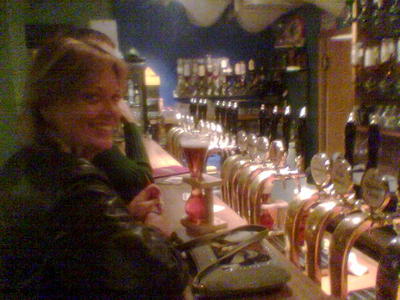
Carlsberg Strikes Back – The Remarkable Danish Beer Market, Part 2
by Tim Anderson (timothyanderson2005@gmail.com)
Apparently invigorated by the influx of foreign beers into Denmark over the last four years that has seen consumption of quality (generally foreign) beers skyrocket over the past years, Carlsberg has taken its first steps in response. Virtually at the same moment I hit the ’publish’ button for the last article I wrote regarding the Danish beer market (The Remarkable Danish Beer Market), Carlsberg announced the introduction of a new line of exclusive, upmarket beers, to be brewed under the name ‘Jacobsen’ (after J.C. Jacobsen, who founded Carlsberg in 1847) in a microbrewery located beside Carlsberg’s Copenhagen headquarters. The Jacobsen line of beers consists of Bramley Wit, Brown Ale, Dark Lager and Saaz Blonde.
This is an excellent sign, from my perspective. The trend towards quality, upmarket beers entering the Danish market is apparently more than a ‘blip’ on the radar screen. Unlike four years ago, when Carlsberg’s market domination of the beer market in Denmark was so comprehensive that the company's half-hearted attempt to revitalise its product range involved offering four new beers, quickly withdrawing three of them (keeping the 'best') and promptly ending all marketing and promotional efforts geared towards bringing this new offering into the mainstream beer market. But time does bring change.
So although this influx of foreign beers into Denmark may have had little financial impact on Carlsberg’s Danish operations – Carlsberg continues to dominate the market – the change is now visibly apparent when visiting bars and shops across Copenhagen, making Carlsberg’s domination seem not nearly as overwhelming as it once was. Choice has returned to the pubs and bars across the city.
Unfortunately, in terms of taste, the new Jacobsen beers, similar to it's 'Hvede' beer introduced a few years ago, do not offer a depth of taste comparable to that many of the foreign beers that are available. After enjoying a Jacobsen Dark Brown, and taking a few sips of the Jacobsen Saaz Blonde a friend was drinking, I was left with the clear impression that neither was bad at all – they were both decent beers with a fair amount of taste. And they were certainly infinitely more interesting than the typical Carlberg or Tuborg pilsner. However, I was nonetheless left with the overwhelming desire for something more. The Saaz Blonde simply did not possess the depth of flavour I have come to expect in a good wheat beer. The Hoegaarden I subsequently ordered did the trick in satisfying this urge. So Jacobsen is a nice addition to the Carlsberg beer family, no doubt, but Carlsberg hasn’t been able to cross over that invisible line that will allow it seriously challenge the more established foreign beers in the area of taste.
So the risk in all of this is that Carlsberg will reach into it’s old bag of market domination tricks, ones that have served it so well over the years, in order to try and convince significant numbers of Danish bars that may be considering adding one or two taps for more upmarket offerings, to opt for Jacobsen over those tasty foreign beers. I am the first to admit that whatever the outcome, all of this is better than no choice at all, which is how it was not that long ago.
There's more! Read on, Setting the record straight - The remarkable Danish beer market (Part 3).
The Remarkable Danish Beer Market (Part 1)
by Tim Anderson (timothyanderson2005@gmail.com)
Change can be dramatic and fast, and so it has been across the Danish beer market where a quiet revolution has been occurring over the past years. Though the mainstream beers of Carlberg/Tuborg remain dominant, foreign beer consumption in Denmark has skyrocketed from 0.7 million litres consumed in 2000, to 8.7 million litres in 2004.
The humble beginnings of this revolution started in 2001 with the introduction of a very limited selection of premium quality foreign beers displayed on small wooden racks in a couple the national supermarket chains. These small wooden racks remain, however they now bookend an entire row of premium foreign beers in the stores of every major supermarket chain. The total space they are now allocated is comparable to that of Carlsberg and (Carlsberg-owned) Tuborg and the other low-quality Danish beers on offer.
An slowly expanding selection...
These foreign beers are sold at a price that is between double to triple that of Carlsberg and Tuborg, yet sales continues to skyrocket. Apparently, taste does mean something to a good number of people after all. The turnaround within the beer market has been astoundingly profound, and far beyond what even an amateur beer enthusiast like myself could have anticipated, must less hoped for, given the sorry the state of affairs that existed less than five years back. The tide is certainly shifting.
Most bars across Copenhagen now offer a small but increasing range of quality foreign beers, particularly Belgian and Czech ones. Whereas back in 2000, Carlsberg and Tuborg flowed exclusively from all but a tiny handful of taps in the bars of Copenhagen, now bars offering only Carlsberg/Tuborg on tap are sliding into the minority. And Hoegaarden, Chimay, Leffe, Staropramen, Erdinger, Franzikaner, Urquel and Budvar flow increasingly freely, with a few of the newer bars opting to leave Carlsberg/Tuborg off the menu entirely. In terms of taste, there is little challenge from Carlsberg/Tuborg for these other far superior mainstream quality offerings.
Unfortunately, for Carlsberg, of the largest brewers in the world (and owner of Tuborg), taste and quality has always been a distant goal after profit, and zooming in on Denmark, the strategy has always been market domination. Countless amounts of sponsorship and promotional cash are doled out by the company to ensure its products remain embedded deep within the collective national psyche of the nation. It has been a successful strategy - the company has generally held its ground and generated a mountain of cash in the process.
This truth was perhaps hammered home most forcefully one night back in 2001, sitting at one of the three bars in Copenhagen at the time that offered a decent selection of quality foreign beers. Carlberg had just released a new beer, called ‘Tuborg Hvede Øl’ (‘wheat beer’), it’s first unfiltered wheat beer. As far as I was concerned, this was fantastic news – at last an attempt to produce a quality mainstream beer from Carlsberg.
The bartender that night, recognising a couple of my friends from previous visits, offered us a round these on the house – he had received a complimentary batch from Tuborg. That night, we happened to be drinking some Belgian wheat beers – I cannot recall which one but I believe it was Hoegaarden. Doing a quick taste comparison, it was evident that Tuborg’s offering, though good, simply couldn’t hold a candle to the far superior Belgian wheat beer we were drinking. And admittedly, there are even better wheat beers than Hoegaarden! The Belgian beer had a depth of flavour that left one feeling Carlsberg/Tuborg’s offering must have been watered down, albeit with a decent flavour at least.
Now there is a couple ways this result could be interpreted. On one hand, in spite of a deep history of brewing, perhaps Carlsberg/Tuborg really did suffer from an underdeveloped experience brewing unfiltered beers - meaing maybe this was the best they could come up with. The bartender believed this was the first unfiltered wheat beer the company had ever attempted. Or perhaps, the real story was economic, and Carlsberg was quite capable of producing something better but couldn’t be bothered to offer up something even more interesting - acceptability over excellence with a strong dose of marketing to bridge the gap, in line with the traditional strategy that ran through the company’s and storied long history.
Bare in mind that around this time period, Carlsberg was running a sort of contest – which was rather in reality a marketing gimmick – involving four new beers introduced for a limited period (Hvede was one of them, the others being Dark, Red and Lager). Consumers could vote for their favourite, the winning beer would remain on the market, the losers would disappear into the black hole of Carlsberg history. Carlberg should have be trumpeting the arrival of four new members of its mainstream family. Instead, it proclaimed it would shortly remove three of them.
Now, for example, in Belgian – a comparably small country but one with a rich and deep history of brewing – between one to two hundred different types of beers are sold in all major supermarkets, double to triple this selection in the numerous specialty beer stores across the country. Similarly, in Germany and Czech, two other countries with a similarly long and proud brewing tradition, choice abounds. Surely, a slightly wider product line from Carsberg would meet with some acceptance in beer-oriented Denmark as well? Rather, Carlsbers’s mass marketing strategy revolved around a very small range of beers – Carl’s Special, Pilsner, and in it’s Tuborg range represented by Green and Guld. It still does, by in large.
The rest of the mainstream Danish market consists largely of smaller, low-cost, copy-cat producers who use the same Carlsberg/Tuborg formula - offering a range of cheap, similar tasting beers - though theirs cost on average around half the price of Carlberg/Tuborg. Interestingly, the taste difference is slight. One could quite convincingly argue a good many of them, such as most of the Harboe and Ceres range of beers, are perhaps even superiour in taste to Carlberg and Tuborg.
There is also one notable high high point of the beer-year in Denmark during the Christmas and Easter season when Carlsberg/Tuborg release, for a very limited time, a Christmas and Easter beer that happens to be a surpringly tasty beer - with the discount breweries also releasing their own competing products to match. Carlberg/Tuborg's is of a similar in quality to Hvede, which is to say, much higher than the standard of their other mainstream products.
Incidently, I recall Carlsberg Dark won that popularity contest a few years back, though the beer has subsequently all but disappeared from bars and pubs and does not generally feature in Carlberg's promotional efforts. From this outcome, one might be tempted to conclude that Denmark’s beer drinkers are conservative and not prone to shift their loyalties to a newcomer, in spite of taste and quality issues. One might thus conclude that to focus on expanding the product range, particularly on the quality end, may not be worth much, especially for a company like Carlberg.
Fortunately, this has proven to be far from the truth, as the exploding foreign beers sales figures demonstrate.
The latest development has seen the introduction of a small range of foreign beers at one of the two (high-volume) discount supermarket chains (Netto). To appreciate the significance of this development, one must shop at these discount supermarkets (and they are extremely successful) to experience just what an extremely limited range of products they sell, particularly on the quality end of things.
It is a genuine pleasure to experience such a rare turn of events where quality emerges from the shadow of a dominant other, much less worthy.
Curious to know more? Read on, Carlsberg strikes back - The remarkable Danish beer market (Part 2) and Setting the record straight - The remarkable Danish beer market (Part 3)
A truly unpretentious man of the people?

Pictures can be telling. In few countries would you find the Prime Minister carrying around an unstylish 10 kr (1.5 Euro) notebook such as the one Danish Prime Minister Anders Fogh Rasmussen is pictured with here (a cheap notepad available in countless discount stores all over Denmark) during his first official meeting with the new leader of the Social Democrat party Helle Thorning Schmidt (the main opposition party). Try to find a picture of Jacques Chiraq or Tony Blair taking notes in such a thing...
But what about it's contents? With regards to Denmarks continuing support and participation in the Iraq war, did Anders remember to pen a reminder note to himself to stop acting like the American puppet he has been and get Denmark out of Iraq and start raising questions such as just how many non-military human casualties ('collateral damage') there have been? Perhaps somewhere he penned an even more pressing reminder to himself to start (re-)humanising Denmark's "xenophobic immigration policies" - the highly quotable (and not exactly insignificant) qualification offered by The Economist when it recently assessed Denmark as the best place in the world to do business. Those immigration policies have taken a decided turn towards radical paranoia under his leadership. Pictures can be telling, but they don't tell everything.
A Stroke of Pure Promotional Genius? Or Maybe Just Good Fun? What is Volkswagen up to?
by Tim Anderson (timothyanderson2005@gmail.com)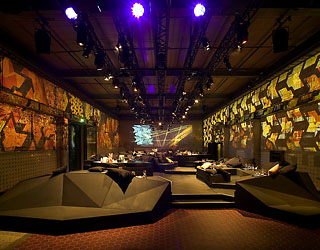
Club Volkswagen in Copenhagen...I mean, Club Fox.
An odd series of events took place in Copenhagen over the past three of weeks. Under the name ’Project Fox’ (project-fox.org), the events centred around a series of consecutive club evenings (20 of them!) in Østerbro (‘Club Fox’), an event hall in Christianshavn (‘Studio Fox’), and a Hotel (formerly known as Park Hotel, now ‘Fox Hotel’) in the centre of the city. Ostensibly the project, initiated by Volkswagen, has a commercial backbone, the launch of a new car model, the Volkswagen Fox. In truth, it is not Volkswagen that has fleshed the project into reality, rather a bunch of street artists, event promoters, performers, and a weekly internet newsletter read by those supposedly in the know (that has surely had a significant role in bringing out the crowds (humanmail@humanwebsite.com to get on this list – I highly recommend it if you live in Copenhagen).
With Volkswagen’s involvement all but invisible by the standard of more typical corporate-artistic endeavours, almost shockingly, this one simply doesn’t fit the prototypical vision one associates with promotional arrangements. I'm going to stick to talking about Club Fox, and only mention that 'Hotel Fox' is a rather original project involving about 60 street artists who each redisigned a room the hotel (with basically NO limitations placed upon what they were allowed to do), while Studio Fox has been the sight of a handful of public debates. But Club Fox has perhaps the most interesting.
Club Fox can certainly not be accused of being staged on the cheap. No budget has been spared to achieve a memorable configuration of design, lighting and sound. I couldn’t be bothered to count how many projectors were hanging from the roof - a lot. Volkswagen’s largely ghost presence is one that has evidently included a donation of a significant chunk of change that has made it all possible. This is not the real story. The club nights have not only been top-notch, they have been unique and steadfastly non-commercial, featuring numerous outstanding (very) underground acts from around Europe.
Furthermore, staged everyday throughout the week (not only weekends), they have challenged the Copenhagen clubbing crowd that typically only appears on weekends, to alter their nightlife habits. There basically is no such thing as clubbing in Copenhagen on Monday or Tuesday (some notable activity can be found occasionally on Wednesdays and Thursdays, I will acknowledge). Project Fox, in wholeheartedly ignoring this longstanding convention, has effectively gambled it’s offering will prove more seductive than television or sleep. As a famous Monty-Python line once went, ‘nobody expects the Spanish Inquisition’ – and perhaps in the same vein, nobody expects such routine-defying provocation from a supposedly dull, corporate entity such as Volkswagen. But they have done it, and it has worked. The crowds have turned up most nights, even knowing (though I’m not even sure that many do) that it is all at the behest of Volkswagen! This is no small feat.
Is anybody buying a Volkswagen Fox?
Achieving such an level of authenticity has allowed the project to in effect ‘breath’ and it has taken on a certain life of it’s own as a result (with still a few days left to go before it’s all over). The feeling at the club by now each night is more akin to an ongoing underground music festival, not the promotional production that it nonetheless remains. It is a rare instance where a commercial presence has truly facilitated one hell of a cool party, rather than simply appearing as an incoherent presence stamped onto an event to which it just didn’t belong, or worse still, offering up some big-budget, dead-on-arrival piece of propaganda propped-up lifelessly by a big-name performer or two. This is the typical history of most promotional engagements of this commercial nature.
Now it is not at all obvious why Volkswagen, in initiating such a high profile event, would decide to keep their involvement at such a low profile. Yet something about the whole arrangement suggests that the strategy seems to have worked – at least in my reading of the whole thing. There is simply no other club or festival in Copenhagen that has managed to put together a comparable twenty night program of live performances in recent years – not to mention create a surprisingly funky setting to stage the thing. What is Volkswagen trying to do?
Almost the only hints of their involvement in all of this, or any other company for that matter, is the Volkswagen people carriers sitting outside the club, shuffling the German ‘VIPs’ and local organisers to and from the club each evening, and the shiny red Volkswagen Fox sitting outside the club a few meters from the entrance. In fact, it was only leaving the fourth arrangement at the club that I noticed the car for the first time. Its presence seemed like more the result of a last-second afterthought someone had, remembering it was probably a good idea to actually display the car for which the event was created and named.
Whatever the intentions, in this simple, strategic stoke of low-profile genius, Volkswagen has managed to avoid the inevitable pitfall that virtually every other sponsor of corporate-artistic collaborations has fallen victim to: the inability to refrain from demanding that their logos and attestations trumpeting their involvement get schlepped all over, in every which place imaginable. Crass commercialism ultimately detracts from any purity of artistic vision that such events may have otherwise possessed, which consequently doesn’t leave one feeling much enthusiasm for the event and even less the sponsor. Even on the widely distributed ‘Club Fox VIP’ passes that serve as the public admission tickets to Club Fox, only a single, very subtle mention of Volkswagen as the project ‘initiator’ is made – and not even on the booklet front page! All this has made it work.
It will never be entirely possible to produce a measure of ‘Project Fox’ as a success of failure; this must remain a subjective opinion. One cannot measure any translation into new car sales that may result. However, what can be suggested is that by avoiding almost all conventions of such sponsorship branding-promotional exercises, Volkswagen has perhaps hit upon the elusive magic equation for successful corporate-artistic cooperation. Put your corporate money in, but keep your corporate image out. When companies try to step inside of the artistic arena themselves, propaganda results, something that has always been of questionable artistic merit, meaningfulness and relevance.
Without being beaten over the head with the message from the first step inside (or even earlier), those attending tend to pretty quickly figure out the purposes behind such events, in any case. The less that is said, the more curiosity is aroused – a pretty effective way to get a message heard. When people are assumed to be intelligent, attentive and receptive - and actually treated that way - POOF, suddenly they just might listen!
Still, all of this begs an answer to the question: did Volkswagen get what they wanted to out of all of this, whatever it was? Let me offer an answer of sorts: WHO CARES! It has been fun, and I’m looking forward to attending one or two more nights before it’s all over. I’m sure there will be great debate at Volkswagen regarding the merits of getting involved in such conceptual ideas in the future. Myself, I am the first to admit that the ‘bang for the buck’ from this project besides being impossible to calculate, is highly debatable. In terms fun for those watching the spectacle, it has surely been an unparalleled success.
Okay, not everyone agrees...
A LITTLE NOTE: I have taken some flak from certain corners for not being more critical of Volkswagen for introducing yet another hardly necessary gas-guzzler to their existing line of hardly-necessary gas-guzzlers. My apologies for this. Nonetheless, it must be said that pollution takes many forms, and Volkswagen's Fox launch, in not being another mechanically cranked-out, brain-dead, loud and overhyped affair, at least avoided contributing to a couple froms of it - the visual and aural sorts. If more companies began taking such an approach - more subtle and requiring perhaps requires a little more intellectual engagement on the part of the subject, well, perhaps surprising and unexpected results touching seemingly unrelated areas may begin to follow...in time.
This article was featured in Sew Magazine - thanks to Nick and Roger at SEW.
SEW Magazine, Issue 10.
Courting controversy, Danish army style
by Tim Anderson (timothyanderson2005@gmail.com)
Recently a number of advertisements for the Danish army have quietly appeared all over Copenhagen. They show a young, normal-looking man below the caption, ’there’s war in the world’. On the flip side is the same young man in a tank - he has obviously decided to join the army and fight the (good) fight. A few days after these ads appeared, I noticed that the street artists had not allowed this one to slip by them. ‘Kill4Maersk’ and ‘Kill4Bush’ stickers were quickly being pasted onto some of these ads. To gratuitously slip in a bit of pop-culture, we may not have started the fire, but we sure know how to keep it burning.
To the questions: should the army be recruiting in this manner? And is a response in the manner of the ad-hackers constructive in any way to the wider discussion?
All of this has proven to be a provocative subject for discussion amongst my friends, people who position themselves politically slightly left-of-centre, some less slight than others. Nonetheless, a couple of them have been surprised to discover that in spite of being self-labelled left-wingers, they found themselves arguing from the right to a greater extent than they would have believed themselves capable of or interested in doing.
Let me declare my position straight away. To me the army ads are not only highly visible, they are clearly one-dimensional and intentionally provocative. Imagery blatantly employed to call upon the Danish participation in the ongoing Iraq war is bound to be just that. Consequently, a reaction from those incensed that creating ads that effectively ignore the various controversies stemming from Denmark’s decision to join the Americans (and all that has occurred as a result) is not only to be expected, it is justifiable. Attempts to coax people towards a position without any discussion – as the army’s ads do - challenge my neutral instincts. These ads are advertisements for fighting, a crude recruitment tactic for the Danish army to take. The ad-hackers message is equally crude and unreasoned, but at least each and every person walking by the ads gets a short blast from both sides, rather than only one. I accept that most people probably don’t really care to think especially hard on the issue, so the ad-hackers tactics may not change anything. Ad-hacking should certainly not be the only means of reacting - more intelligent discussion is also clearly required.
To begin with let’s first consider the ads themselves placed by the Danish army. As a Canadian, I’ve have been brought up - some might claim indoctrinated - in a ‘peace-keeping’ culture. This is what Canadians pride themselves on when they speak of their global military role. The Canadian military, often under the guise of blue UN helmets, has for better or for worse offered its services in this way for decades to various hotspots around the world. The Danish army’s ads are not about peacekeeping. There is nothing wrong with this since not all countries use their armies precisely in the manner Canada does. But in its place I would expect some reference to the greater good that will come from joining the army. Peace and harmony - those things one perhaps idealistically hopes will spring from the aftermath of fighting are not at all the point in this ad. This disturbs me. I have a sense that the Danish army has far a far greater purpose and responsibility in recruiting than this ad suggests, but this ad could lead one to believe the army has all but abandoned that idea. I know it is only a single recruitment ad, but is this why people should want to join the army? Does Denmark really want an army full of those attracted by the chance to fight? I hope not.
Yet the ad-hackers message is equally controversial. I’m uncertain how many in Denmark would be overly offended by the ‘Kill4Bush’ suggestion, especially those like me still in disbelief that the Americans could pass up the chance to elect a thoughtful and dignified leader precisely when they needed one the most. It is debatable just how much ‘killing for Bush’ the Danish army has in fact done in Iraq, but their is a certain guilt by association that Denmark must be accepted in going along with the Americans – in particular that right wing 51.5% who voted for Bush again. The Danish army is ultimately subject to the whims of the Americans forces – the same force that has killed an awful lot of innocent Iraqi civilians (though the Americans have opted not to keep an official count of the numbers). So, I accept the ‘Kill4Bush’ signs. But ‘Kill4Maersk’? Bringing Maesk into the picture is something else. What does Maersk have to do with any of this? Should they shoulder any of the blame?
Well, perhaps.
Maersk was contracted by the American Department of Defence before the start of the current hostilities in Iraq to provide transportation and logistics for the troops, supplies, weapons and ammunitions. This is serious business, indeed. As arguably the most economically significant company in Denmark, Maersk’s influence is felt in many ways - just look at the not-exactly-inconspicuous Maesk-funded opera house in the Copenhagen harbour. Even if Carlsberg had managed to land a contract to supply almost every liquid substance in the desert, and Danfoss had quietly convinced the Americans that only fools would dare cross the hot sands of Iraq without a mountain of radiator dials for the liberated to regulate their heating systems, no Danish company stood to benefit from the war in Iraq from the outset more than Maersk. Is it possible that the Danish Prime Minister might have the loud and persistent whispering in his ear shortly before he opted to join the coalition of the willing? In any event could he have been influenced, or like Tony Blair, was his mind already made-up?
As one left-wing friend of mine rather indignantly argued, if war is inevitable and some will profit as a result – an old story - what does it matter if it happens to be Maersk getting some of the cash? A professional company like Maersk can presumably help the situation in Iraq, not hinder it, so their presence is probably a good thing. If Maersk wasn’t involved, somebody else would surely have taken their place. Nothing changes with or without Maersk.
Well, maybe, maybe not. Maersk has taken on a significant level of moral and ethical responsibility by participating directly or indirectly in the war. If a weapon they have shipped kills somebody, as was the case when they were supplying Nazi’s with weapons during the second world war (recently chronicled in a series of articles run in Berlinske Tidende), the company must accept their actions played some role in the killing – which is not to say that the killing may not have otherwise occurred. But where does their responsibility begin and end? And who are the people in Maersk specifically tagged with this responsibility? Is an open discussion about such sensitive matters not a necessity if there is any hope that conflicts of interest are avoided? The open question remains: are companies particularly well-suited for making sound moral and ethical judgements? What evidence exists to suggest they can be entrusted with issues that wider society in itself struggles to handle? Are governments any better? After years of business studies, culminating in a Masters Degree in Economics and Business Administration, the answers are not at all clear to me.
Clearly not all companies are evil, or destined to become so, but assessing this issue is a fuzzy matter. Google’s recent declaration in their shareholders prospectus that the company will strive to ‘not be evil’ does not prove if they are or not. Neither does it foreshadow an inevitable future lapse, nor guarantees the long-term saintliness of the company. It does acknowledge the issue, which is a start. Recent documentaries like ‘The Corporation’ conclude companies may even be psychopathic by nature. This is only one side of the issue. The Economist, in arguing that companies are not necessary doomed to spread evil, has consistently, convincingly and intelligently argued over the years that those governments who have set the strictest limits on private-business are also the ones who have most consistently ignored and violated their own citizens basic human rights. But The Economist is also cautious to sound a note of warning at any suggestion that private business should be handed the only set of keys to the car.
The moral implications of choices are most likely be considered by companies when they could have an obvious negative effect on short-term profitability. Just think of Nike taking fast action to improve the pathetic standards of many of its third-world sweatshops a few years back when the issue was a hot media topic. Yet today when buying an unbranded pair of shoes to avoid the ubiquitous Nike swoosh-thing, one is still left with no way of knowing what conditions those who made the shoes were under. But do we trust that Nike will in future not use its influence to argue against further regulation regarding their behaviour in the third-world countries in which they do so much business? How do we know that Maersk has behaved responsibly in the lead-up to the Iraq war when the issue of whether the Danish government should participate at all was still officially undecided? Did they quietly try to influence the government? It may have lead to an lot of uncomfortable questions if the largest company in a company formally against the war was making so much money from it. What has been Maersk’s role since? What assurance should their be that the delicate moral and ethical issues that surround a companies actions, tactics and influence are being appropriately considered and addressed? So we come to the heart of the issue.
Are we just to turn a blind eye to Maersk’s habit of wartime profiteering because they are (in this war) on the side of the 'good' guys? Is it too late to ask such questions? The silence from Maersk on such matters is hardly reassuring.
So we are back to the ad-hacking dragging Maersk into a criticism of the Danish army’s recruiting tactics. Are these constructive attacks to be making? Well, why not? Maersk is involved in the war, and the company is big and rich enough to take criticisms. There surely should be means for holding companies accountable for all their actions, and somebody might as well start somewhere. Not everybody can get the mainstream media to broadcast their questions and opinions and it’s not exactly easy to ring up to old Maersk himself to get his thoughts, as interesting as this might be.
In any event, I hardly expect to hear a reaction for Maersk the person or A.P. Moller the company on the matter. But if a few people see the ads and the ad-hacking, and think for a couple seconds about the moral and ethical implications of the actions of private business in wartime, that would be a good start. In the meantime, I sure hope those army ads disappear.
 RSS Feed
RSS Feed  Twitter
Twitter 